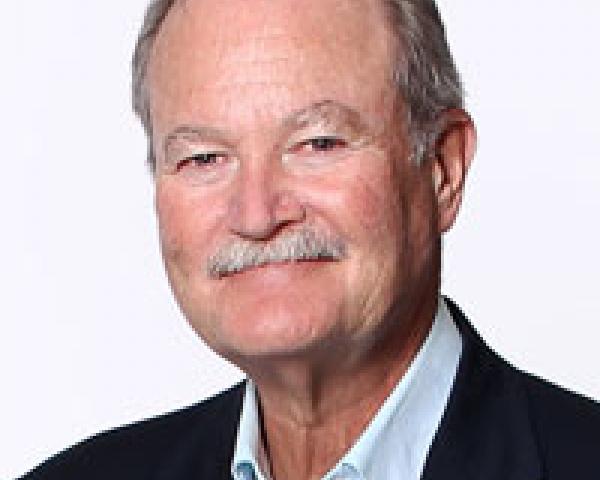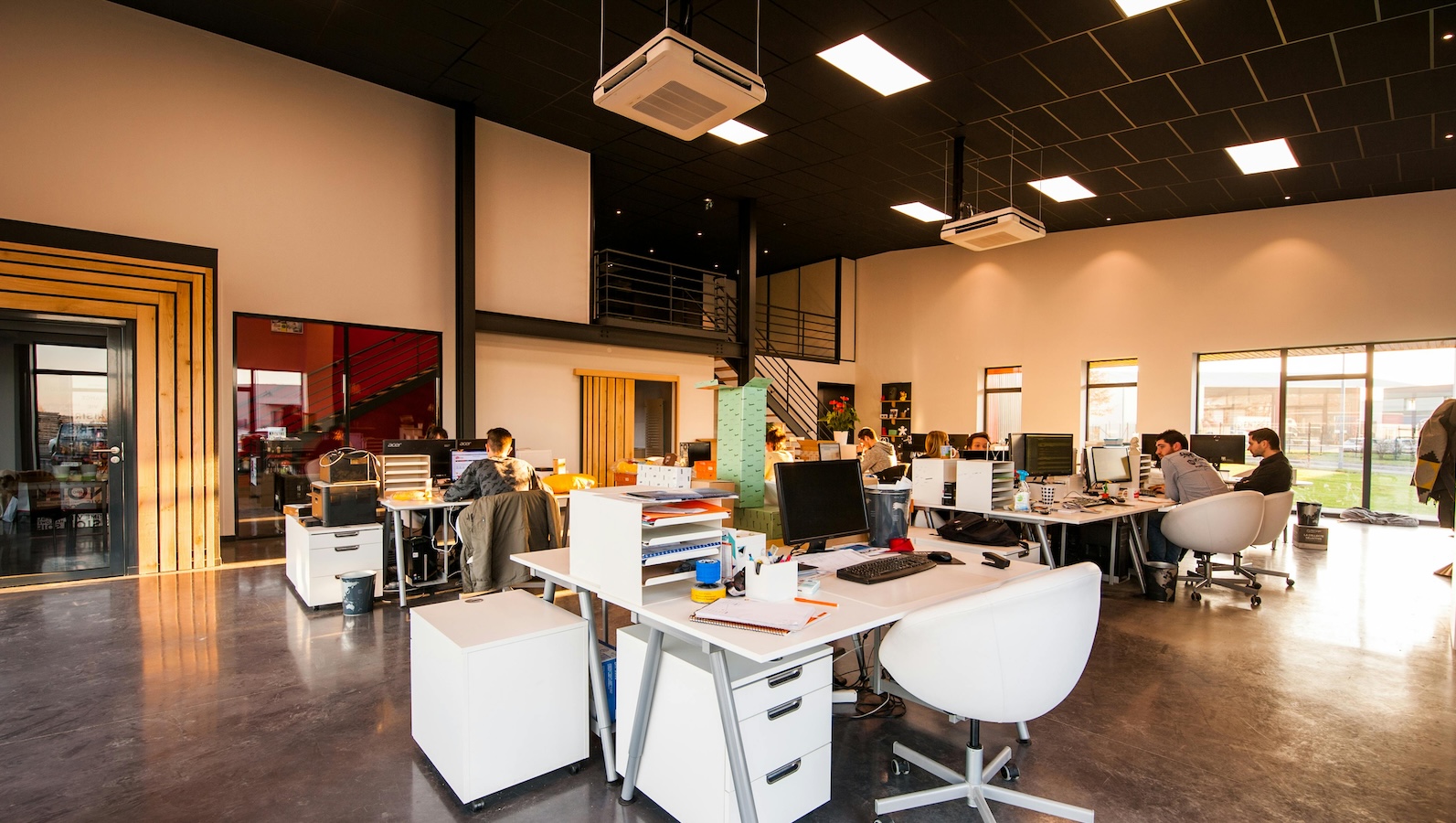Brian Duperreault, chairman and CEO of Hamilton Insurance Group, told attendees at A.M. Best’s 23rd annual conference in Scottsdale, AZ, that the insurance industry has been an analog laggard rather than a digital leader, and that the clock is ticking on responding to the needs of a digital world. The address follows:
Thank you, Matt, and thanks for that wise review of the forces that have shaped the industry over the years.
Hearing that history line makes me feel pretty old. I lived through a lot of those highlights.
You’ve heard where we’ve been as an industry, and I’ve been asked to give you some thoughts on where we’re going.
The title I’m using is
Insurance in the Age of the 12th Man. I’m sure most of you know what I’m referring to by the 12
th man – any Seahawks fans with us today? – but in case you don’t:
The reference to a 12th man was first used more than 100 years ago to describe a really dedicated football fan.
It gained some significant traction at Texas A&M, and the Aggies still claim it’s theirs – in spite of what the Seahawks say.
The point is this: Fans can be so fanatically loyal to their team, it’s like having a 12th man on the field. Fans can shape the game and often affect a win or loss.
I’ve heard they can even make the earth move.
Last month, fans at a soccer game in the U.K. celebrated a last-minute goal so “enthusiastically” that it was recorded as a minor earthquake.
Why am I referring to the 12
th man in a talk about the future of insurance?
Because we’re doing business in an age that’s profoundly different from anything we’ve ever experienced, and I believe it’s driven by what I’m going to call the 12
th man phenomenon.
Virtually every industry has been redefined by an increasingly demanding customer, and it’s doing the same to ours. It’s the fan base – the collective 12
th man – that’s driving how we develop, market and distribute our product.
And for many companies, there’s not much time left to figure out how to stay in the game.
PwC just released its annual CEO report and noted that access to digital technologies means that we’re more connected, better-informed and, in PwC’s words, “increasingly empowered and emboldened.”
This isn’t just a shift in market forces. The market has always been changing, and we’re used to that. This is something entirely different.
Given the digital world we’re living in and the impact of real-time communication through social media, the market’s voice is much more crystallized. There’s an immediacy, an intimacy that we’ve never had to deal with before. This is a voice that’s loud, clear and specific.
One of the best examples of the effect of the 12
th man is Uber.
You probably know Uber’s story.
Its founders were so fed up with how hard it was to get a cab when they wanted one that they developed an app that puts a taxi at your fingertips. They didn’t just enhance the taxi industry; they blew the existing model apart.
They didn’t care what the regulations were. They just made it work – and it continues to work, because Uber gave customers what they wanted. AirBnB did the same thing to the hotel industry.
- If you’re used to downloading apps to watch a movie, do your banking or order your groceries;
- If you customize how, when and where you listen to the radio or watch TV;
- And if this uncluttered, efficient, highly personalized way of living is what you’ve been used to since you could walk, then
There’s no reason that you’re going to expect anything less when you’re buying insurance.
Maybe this sounds like background noise to those of us who’ve been in the business for a while. After all, our industry has been resilient over the centuries. It’s been a safe bet for decent returns on investment.
But people my age see the world through an analog prism. This is our Achilles heel - because there’s a generation of 80 million Americans who see the world through a digital lens.
This is the workforce that Matt referred to earlier.
They’re going to be the buyers and sellers of our products. They’re going to run our companies. As the largest voting bloc in the U.S., they’re going to elect our governments.
They’re going to be a noisy and demanding 12
th man. They already are.
This expectation for a streamlined and efficient buying experience is one of the main drivers behind my company, Hamilton Insurance Group. We believe that insurance has been an analog laggard, not a digital leader. We think we can do something about that.
As I give you thoughts on what will shape our industry over the next decade, I’m going to keep coming back to the 12
th man.
I’ve seen lots of lists of future industry trends – some of them are mine – but I think it comes down to:
- How to build a sustainable company
- How to be smart about data and
- How to strip waste out of our industry.
Let’s look at sustainability.
Traditionally, creating shareholder value in an insurance company has had two main components: investments and underwriting.
Right now, we’re between a rock and a hard place on both counts.
We’re in a prolonged zero-lower-bound period where interest rates dip in and out of negative territory.
In a traditional insurance company, there is no money to be made on the fixed instruments that most companies are required to invest in.
Having low-yield assets on a balance sheet for regulatory purposes virtually ensures little investment income.
What’s a CEO or CFO to do?
Well, you can shift your investment philosophy and invest in equities or alternative instruments with a higher yield. But you have to prove you can handle the additional risks that come with a different mix of asset allocations.
You also need an expert asset manager who’s well-versed in current regulations, as well as the commitment
of your executives and board, to move to a riskier investment strategy.
You can bank on profitable underwriting – but in a market like this, that’s a grueling experience. Terms and conditions are tough, and margins on most lines of business are razor thin. You have to stay disciplined and resist the siren call to write discounted business. And it seems the days of large reserve takedowns are over.
You can look for M&A opportunities, which in many cases may delay the inevitable and add the stress and cost of effectively integrating what are likely to be legacy systems and cultures.
And while you’re grappling with investments, underwriting and M&A, you have to keep an eye on the rapidly changing digital world, which could render your company obsolete.
So what’s a sustainable business model look like in the age of the 12
th man?
I think part of the answer lies in a flexible regulatory environment.
If you’re a company in Bermuda, where your regulator is the Bermuda Monetary Authority, you can establish an alternative investment strategy, as my company has done, in return for putting up additional capital, and work with a data-driven investment manager like Two Sigma, which manages Hamilton’s investments.
Almost a decade ago, the BMA embraced the Solvency II framework and then fought to get Solvency II Equivalency for Bermuda. Their persistence will be rewarded when official recognition of Bermuda’s equivalency takes legal effect on March 24.
I don’t think it’s a coincidence that virtually the day after Bermuda’s Solvency II Equivalency was announced, XL Catlin announced it was moving its company registration to Bermuda. I think others will follow.
Bermuda has reacted well -- better than most -- in recognizing that flexibility is key to staying solvent.
In the States, things are more complicated. Deloitte released a report last month that said one of the biggest challenges for today’s insurance companies is trying to comply with new capital regulations that were originally designed for banks and don’t provide much flexibility in modifying an investment strategy.
It’s an accepted tenet that regulation works best when it addresses market failures and protects insurance buyers. But regulation can over-correct: In some cases, states have been too slow to rewrite laws, some of which have been in place for almost 100 years.
Today’s regulator has to confront the effect that the digital dynamic is having on both the insurer and the insured. This creates the need for a delicate balancing act: defining the right regulatory regime in a market that’s morphing in front of our eyes.
A word about rating agencies – sometimes referred to as de facto regulators:
Some agencies, like A.M. Best, have been forward-thinking in broadening the factors they consider when assigning ratings. I applaud Best’s for undertaking the survey on predictive analytics that Matt discussed. This is a meaningful contribution to the dialogue. We need more of that from our regulators and rating agencies.
Best’s has also done the work to understand alternative assets. For example, at Hamilton, Best's spent time onsite with our investment manager, recognizing that these complex strategies require some effort to understand.
Having said that, I’d like to urge rating agencies to put more weight on the 12
th man’s voice. How you’re accepted by the market matters. The quality of the relationships you establish, the panels you’re on, the submissions you receive – that all matters.
I said investments and underwriting were traditional aspects of building sustainability. M&A can play a role, and technology definitely does.
However, in this second decade of the 21
st century, there’s so much more to running an insurance company.
In addition to a vocal, demanding 12
th man, we’re living in a world of extreme political polarization, exchange-rate volatility and social instability.
And against that fragmented, disrupted backdrop, there’s the expectation that a company’s commitment to purpose should be as important as its commitment to profit.
Almost half of the 1,400 CEOs surveyed by PwC feel that, in five years, customers will put a premium on the way companies conduct themselves in global society.
Building a sustainable company is one of most complex issues we’re going to face over the next decade.
Now let’s look at data.
A few years ago, we were all talking about Big Data. It was THE buzz word.
Looking back, I think it’s safe to say that most of us didn’t know what we were talking about.
But living with the effect of disruptive technology, we’ve been on a steep learning curve. We’ve begun to wrap our heads around what we can do with the massive streams of data available to us.
EY just released a study on sensor data. It’s worth a read if you haven’t seen it.
As lead director at Tyco, I have to declare my interest in the subject. We’re spending a lot of time looking at how streaming data can help us develop better products.
We’re taking a holistic, data-driven look at behavior across multiple channels to give our clients the insight that helps them optimize their performance.
EY says top-performing insurance companies are already innovating with telematics, wearable technology and sensor data. EY lists the competitive advantages of being smart about data this way:
- You can assess risk more precisely
- You can design products faster
- You can connect with customers more directly
- You can revolutionize claims handling
- And – you can maximize profitability because of better targeting
The implications for what sensor data can do for our industry are remarkable.
We’re talking about sensors on people, on cars, on ships and planes, in offices and homes, on GIS systems that provide data about climate – pretty much anything on the earth, or in the sea and sky.
Understanding this voluminous amount of data, finding correlations and eliminating bias can help us develop policies that are better-written, more comprehensive and more relevant.
Being smart about data also helps us come to grips with emerging risks, particularly a risk like cyber.
At Hamilton, we’re taking a cautious position on cyber. We’re not writing it as a class until we’ve identified an approach that gives us comfort. We haven’t found one yet, mainly because there’s been a tendency to underestimate the interconnectedness of cyber risk.
Too often, discussion about cyber revolves around hacking. But if you put any credence in what I just said about the impact of sensor data, you have to believe that there’s data-based risk in everything we do nowadays. If that’s true, what are the implications for cyber?
Getting back to sensor data –
Access to this type of intelligence has some significant implications for our distribution partners. The role of the broker and agent has been evolving for years, but data analytics is one of the greatest threats – or opportunities – for the partners who help us develop and distribute our products.
Who owns the data? Who interprets it? Does the insurer or the insured need anyone to do that any more?
Then there’s the duality of the role that brokers and agents play. They represent the insurer’s interest as well as the insured or reinsurer. Serving two masters is never easy. How well can you do that in an age of colliding data sets?
I think the answer to whether there’s still value in an intermediary is a qualified yes - IF the broker or agent brings a level of expertise and counsel that far surpasses what the carrier offers or the client can determine by himself. This means setting the gold standard for manipulating and interpreting data.
A last comment on data –
One of my own learnings over the last year or so is that if a company is going to embrace data and technology, it has to be a company-wide initiative. It can’t be done in silos.
I don’t think it works to have an incubation or innovation lab where a dedicated team is exploring a new risk management frontier and the rest of the organization is conducting business as usual. You’ll have constant dissonance between the analog and the digital.
At Hamilton, one of the advantages of being a start-up is that we’ve been able to make technology a focus of our strategic plan from the beginning.
Last year, we bought a Lloyd’s syndicate that we’ve completely rebuilt. The benefit of not having any legacy has allowed us to create an end-to-end, integrated system with all reports coming from one centralized data warehouse.
We’ve already demonstrated the value of this model. When Lloyd’s moved to require its syndicates to report pricing data for gross rather than net performance, a lot of managing agencies struggled. We didn’t.
Finally, I’ll look at the last issue I listed in my opening comments – getting rid of the waste in our industry.
By waste, I mean the massive cost of doing business. I’ve been beating this drum since Hamilton was established a couple of years ago, and I’ll keep at it because, if anything puts our industry at risk, it’s the inefficient way we acquire business.
Thirty to 40% of every premium dollar goes to acquisition and managing the business. At Lloyd’s, it’s even higher, largely because analog data-gathering weighs on the market like an albatross.
The quest to make buying insurance easier and more efficient through data analytics is the DNA of our U.S. operations, where our focus is small commercial business.
We want to remove the pain of the rate/quote/bind experience and sharpen the underwriting. We’re blessed with employees who believe in our mission and who have moved mountains to make it real.
They’ve spent the last year stripping unnecessary questions from the forms used in the acquisition process. We know a lot of that data suffers from human bias or error, and much of it is available from public sources that are more reliable. We use data that comes from dozens of different sources as part of our risk scoring and underwriting process.
Our long-term goal at Hamilton USA is to get the questions that an agent or broker asks an insured down to two: name and address. Smart data analytics, as well as more informed underwriting, will do the rest.
We’ve also created streamlined portals for quotes and are just weeks away from launching mobile-based technology that rates, quotes and binds business owners policies.
The small commercial segment that we’re working in has an average policy size of under $25,000. This is business with small margins and high transactions. Efficiency is critical if you want to make any money.
And there’s ample room for doing just that. In the U.S., this is a $60 billion market. It’s almost $90 billion when specialty risks are included.
You can see why speed to market can make a huge difference in profitability.
Speed to market doesn’t mean we’re cutting out the middleman.
There’s plenty of room at the table for brokers, agents and MGAs – as long as they want to align their systems and practices with our cutting-edge analytics.
We’re working with partners who are as excited as we are about the potential that data analytics represents. We’re being approached by many others who are interested in taking this journey together with Hamilton.
And there’s a generational component to all of this. Some older clients want to do business with a broker or an agent. It’s a relationship they recognize and feel comfortable with.
But remember that 12
th man. There are 80 million of them for whom a middleman just gets in the way.
In closing –
I know that Matt was a keynote speaker at a conference earlier this month organized by Valen Analytics. I understand there was lots of good discussion and some fascinating stats underscoring the imperative to embrace data analytics.
Apparently, 82% of companies surveyed last year by Valen say that underwriters are resisting analytics. 30% worry about a loss of jobs. 30% don’t trust the data.
77% of underwriters and actuaries argue about pricing. The No. 1 reason? Underwriters dismiss data in favor of their own judgment.
While we continue to resist change, venture capital companies are looking at our industry and seeing dollar signs.
In 2015, VCs invested $2.65 billion in start-up insurance companies like Oscar, Gusto and PolicyGenius. Ten years ago, that figure was $85 million.
So the clock is ticking. There’s not a lot of time left to figure out how to build sustainable companies, be smart about data and be more efficient.
Above all else, we need to get over our inherent resistance to change. If insurance as we’ve known it was an ecosystem, large sections of it would be on the endangered species list.
But I’m an eternal optimist. I know we have bold people working in insurance and reinsurance. I know a lot of us get what needs to be done.
So let’s just do it – before that 12
th man comes down from the bleachers and does it for us.








